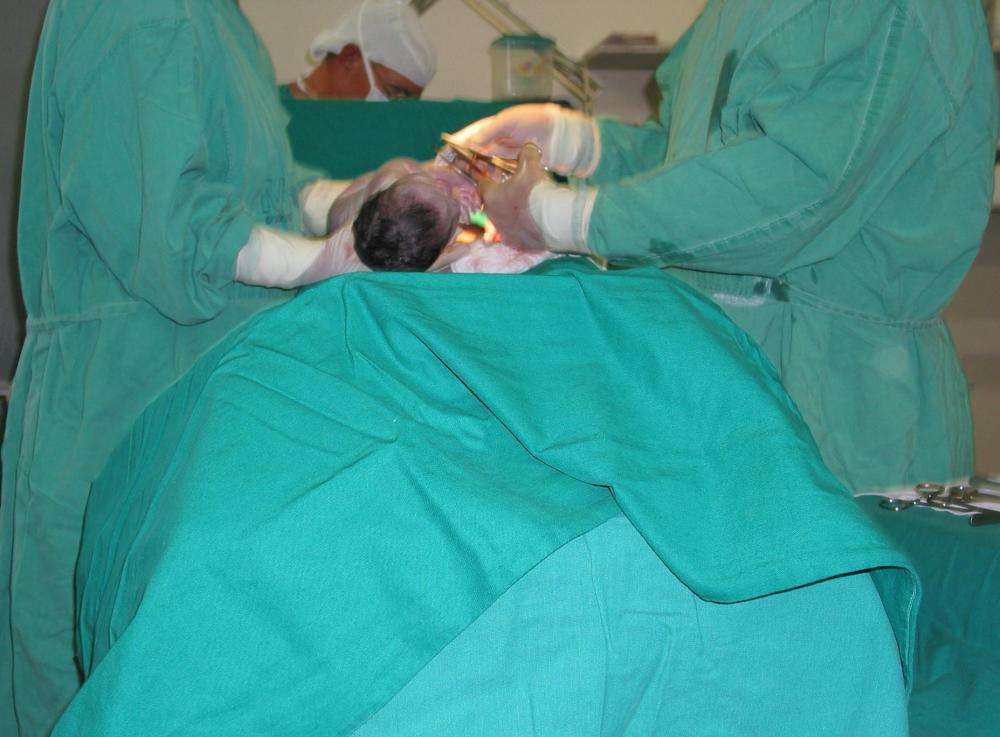At WiseGEEK, we're committed to delivering accurate, trustworthy information. Our expert-authored content is rigorously fact-checked and sourced from credible authorities. Discover how we uphold the highest standards in providing you with reliable knowledge.
What is a Vacuum Extractor?
A vacuum extractor is a medical device used in assisted delivery of a baby when it becomes apparent that a woman will not be able to deliver on her own. A number of techniques can be used in assisted delivery to help a woman deliver before turning to a cesarean section to get the baby out. When developing a birth plan, women may want to talk with their care providers about the situations in which vacuum extraction might be used, so that they can be fully prepared.
Soft and hard cup vacuum extractors are available. As the name would suggest, a soft cup vacuum extractor uses a soft, flexible cup which is positioned over the baby's head, while a hard cup extractor uses a hard cup. In both cases, a gentle vacuum is created to help the cup adhere, and the baby is gently pulled out, with support being provided to stabilize the baby. During vacuum extraction, repositioning of the baby is difficult, making it important to confirm that the baby is in a safe position for delivery before the procedure begins.

Vacuum extraction was introduced in the 1970s, and treated as much safer than using forceps. However, there are some risks to vacuum extraction. It needs to be performed by someone who is competent and who has received the proper training, and it needs to be performed patiently. It is critical that the baby be stabilized to avoid twisting the spine or neck, and that the cup be applied carefully to avoid causing damage to the skull.

When a vacuum extractor is used during delivery, it is not uncommon for the baby's scalp to have bruising, cuts, or blisters. Sometimes eye hemorrhage occurs. The risk of maternal hemorrhage and infection declines when a vacuum extractor is used in assisted delivery, but the risks to the baby can be increased. Pregnant mothers should familiarize themselves with the risks so that they can make an informed choice during delivery. It is also important to be aware that vacuum extraction is only used when the baby has started descending and the head is quite low. It is intended to facilitate the last part of delivery.

People also associate the term “vacuum extraction” with abortion. Some abortions are indeed performed with a suction device, but the device used is not the same as the vacuum extractor used in assisted delivery. Suction-aspiration or vacuum extracted abortion is a common choice for surgical abortions performed early in a pregnancy.
AS FEATURED ON:
AS FEATURED ON:














Discussion Comments
@SZapper - I hope everything goes OK with your friend. I have a few friends that were really set on having a natural childbirth, but stuff went wrong and they weren't able to. In the end they were happy to have healthy babies, but one of my friends was extra sad she wasn't able to follow her birth plan.
I actually think forceps sound like a better option than a vacuum extractor. They seem to have worked fine for hundreds of years! Also the idea of vacuum suction near a babies head is a little disturbing to me.
One of my friends is about to give birth any day now. She's really scared something might go wrong and she mentioned this vacuum extractor thing to me the other day.
My friend really wants to have a totally natural childbirth and is terrified of a c-section. She was really interested in this option because it's sort of the next step to help a natural birth along before resorting to a c-section.
I'm hoping everything will go smoothly and my friend won't have to find out about vacuum extractors and such. I guess we'll see.
@SailorJerry - Is your wife's doctor an older gentleman, by any chance? The use of forceps is a dying skill in OBs today. At any rate, as I understand it, the advantage of forceps is that they're not a machine. Some people like to have that greater level of control.
Forceps have actually been around since the 1600s. They are less likely to fail (which can require a particularly nasty C-section) than vacuum extraction. On the other hand, they're more likely to cause damage to vaginal and perineal tissue.
My wife's doctor has told us that he rarely uses either one, but that he actually prefers a forceps delivery instead of vacuum extraction for birth. Are there some advantages to forceps over vacuum extraction?
We are hoping to avoid either one. My wife won't have any interventions that are not medically indicated (i.e., an epidural is our last resort, not the first), but we know that sometimes things don't go as planned and we want to be prepared for all eventualities.
Post your comments